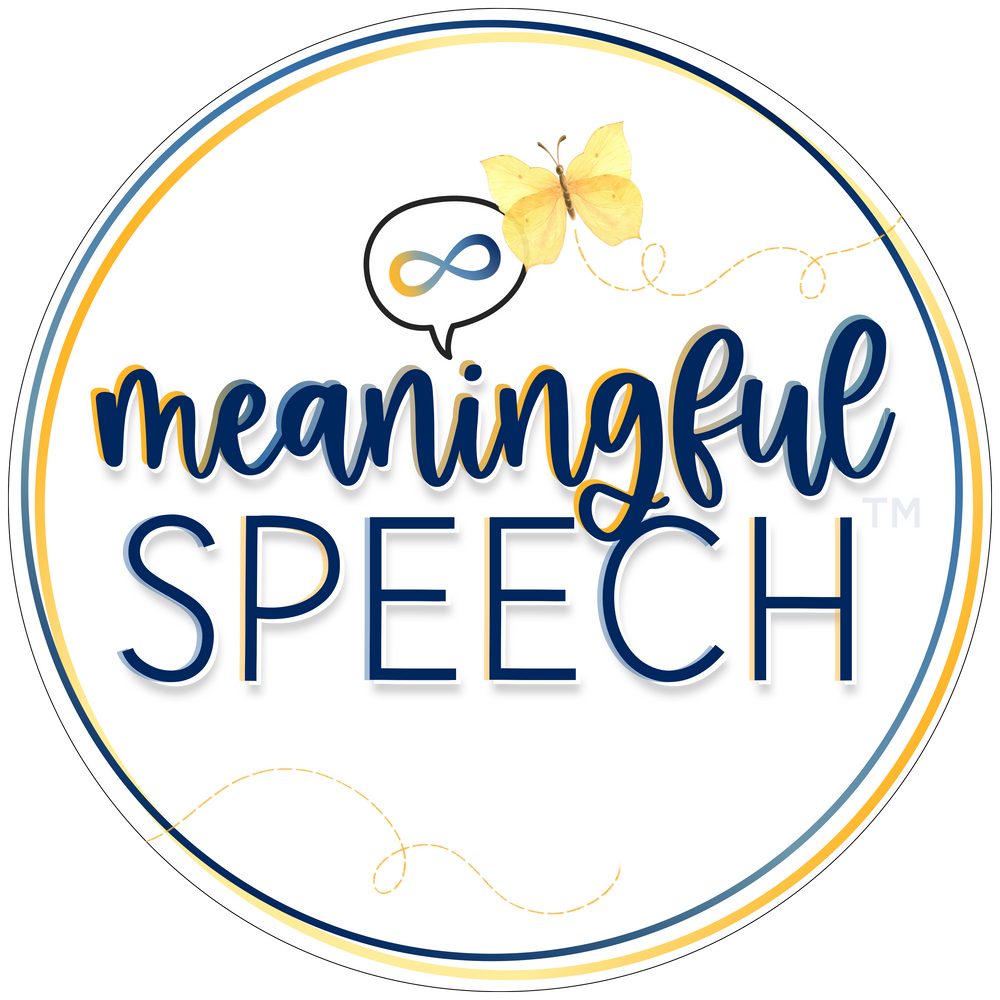Screen Time and Gestalt Language Processors
May 22, 2024
We’ve teamed up with Abby from @playmore_techless to discuss screen time with gestalt language processors. Many gestalt language processors pick up language from media. While media may provide language models that are natural, easily mitigable and support a gestalt language processor in moving through the stages, it can also provide language models that can make it more difficult to move through the stages. Let’s look at the pros and cons of screen time, an example and what our recommendations are.
What are the pros to screen time?
-
Many gestalt language processors acquire new gestalts (Stage 1 of gestalt language development) from media and this can be a great thing! Sometimes the gestalts acquired are natural, easily mitigable (easy to mix and match or trim down in stage 1) and short phrases (which help with intelligibility and lessen the likelihood of the child picking up stuck single word gestalts).
-
They may find joy from watching their favorite characters, shows, videos, etc.
-
Watching together with your child or client can be a wonderful way to connect AND to identify the context from which their gestalts/scripts are coming from.
What are the cons to screen time?
- Some gestalts that are acquired from media can be difficult to mitigate and, at times, are less “natural” than language gestalts acquired from other people. This might make it more challenging for them to progress through the stages toward flexible, original language.
- Media is not able to model new language within a child’s stage of gestalt language development the way a familiar adult intentionally can.
- If a child only views media as their source of language, they might be inclined to continue amassing hundreds of gestalts from media, and potentially struggle to connect with natural language in their environment.
Let’s look at an example
Below are examples of an early gestalt language processor’s language that was shared with us by their parent (@that.anxious.momma) who took notes on what they noticed based on the different shows their child was watching. As the shows changed, so did the language that was being picked up.
Initially, many of the shows led to long unintelligible gestalts or single word gestalts. As the shows changed, their language became more intelligible and were more natural and easily mitigable.
On the left you will see the show, in the middle you will see the gestalts and on the right is parent notes.



As you can see through these language samples and parent notes, as the media the child was watching changed, so did the language that they were using. The earlier show was dysregulating, and the child picked up phrases that weren’t easily mitigable as well as stuck single word gestalts. The latter shows were more natural, applicable to their daily life and easily mitigable whole phrases which was helpful in them moving through the stages of gestalt language development.
What do we recommend?
We recommend a balance when it comes to screen time with gestalt language processors.
- Validate and honor a child’s screen interests through watching their favorite media with them and connecting.
- Use these opportunities to do the detective work into the gestalts they’re using and gain context/meaning.
- Be mindful and take note of what you’re seeing/hearing based on the media they’re watching like the example provided above. Try introducing new shows that may incorporate natural, more applicable, and easily mitigable models if the child is interested (don’t force it!).
- Encourage many opportunities for playful screen-free connection. You might try bringing screen-based interests off-screen through bringing favorite character toys on a walk, coloring favorite scenes, using media gestalts within social play like Hide-n-seek.
Want to learn more in-depth information about how to support gestalt language processors?
- There are many free podcasts, webinars and articles to get you started. A comprehensive list of resources can also be found on our website. We just released a new FREE masterclass on echolalia and child-led therapy that is perfect for anyone starting their learning journey or on the fence about purchasing our courses!
- Consider taking the Meaningful Speech course to learn more about how your child or client processes language, how you can help support them from echolalia to self-generated (original flexible) language, child-led therapy, and neurodiversity-affirming practices. Looking for something shorter? We have a 1-hour introductory course perfect for extended family, daycare or school staff.
- Consider taking our AAC + Gestalt Language Processing course. It will teach you how to identify, evaluate and support gestalt language processors who use AAC or who you think might benefit from AAC.
- Look for a speech-language pathologist (SLP) who "gets it" and can help you in supporting your child's language development. Check out our registry for SLPs who understand gestalt language processing and child-led therapy.
- Are you a school-based or private practice clinician looking for intake forms for new clients/students or creative visual reminder posters for your space? Check out the Meaningful Speech Marketplace.
